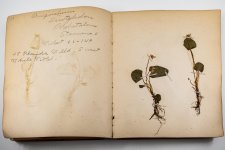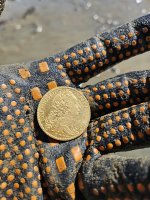DaftCharlie
Tenderfoot
Hi everyone!
I found this gorgeous handwritten botany notebook on Long Island, though it's not necessarily from there. It appears to be a child's school book, but I'm just guessing (the name on the front seems to be "Mattie. R. Harrison").
I'd love to find out around when this was made but my book research skills are still pretty limited. I read it front to back and couldn't find a single date, unfortunately. Any help at all would be immensely appreciated!
Thank you in advance!
View attachment brylb458vjf71.jpg
View attachment xlczm2xkvjf71.jpg

View attachment rds3ksesvjf71.jpg
I found this gorgeous handwritten botany notebook on Long Island, though it's not necessarily from there. It appears to be a child's school book, but I'm just guessing (the name on the front seems to be "Mattie. R. Harrison").
I'd love to find out around when this was made but my book research skills are still pretty limited. I read it front to back and couldn't find a single date, unfortunately. Any help at all would be immensely appreciated!
Thank you in advance!
View attachment brylb458vjf71.jpg
View attachment xlczm2xkvjf71.jpg

View attachment rds3ksesvjf71.jpg





